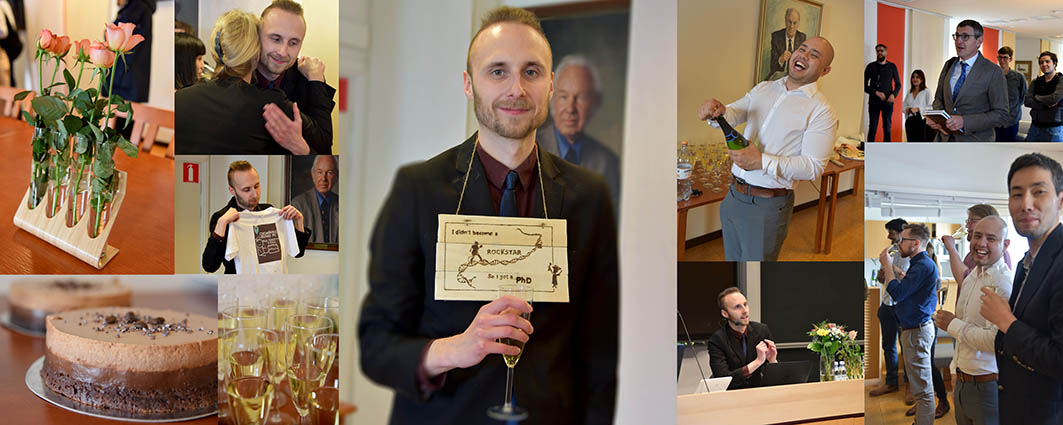POSTS
LacI - Sloppy or brilliant?
It was twelve minutes past 9 am, and Emil seemed pleased. The video conference was cooperating, and the opponent and thesis committee was nicely lined up on the big screen in B8. A public PhD defense in Covid times is a special ceremony paying tribute to all the technology people have devised to communicate without being in the same room. Minutes later, a few slides into Prof. Petermann’s introduction to the subject, Emil was frantically trying to get the technology back on track. When the recorded lady was telling us for the third time to rejoice since we had now successfully joined the Zoom-meeting, Emil gave up. He did, as every resourceful PhD student does in that situation, a workaround. The remainder of the defense was a joy to witness, although I’m still somewhat confused as to the speed of relaxation during fluorescence decay…

Figure: (Upper left) Lab device for roses? (Upper left right?) Proud mom! (… Middle left) Covid took my Parteeeeeyyyyy (sad face). (Bottom left) But we still have cake! (Bottom left right) And Champagne! (Middle) The new DOCTOR in all his glory. (Upper right left) Happy Mexican battles Champagne bottle (and wins). (Upper right) Proud supervisor declares that Emil passed the defense, HURRAY! (Bottom right left) Emil explains something difficult. (Bottom right) Happy colleagues!
Thesis Abstract
Cells in all life forms regulate their genes with the help of transcription factors (TFs). These proteins turn genes on or off by binding regulatory motifs present in the DNA. Before this binding can occur, a TF needs to search and find the specific binding site in the genome of the cell. TFs have been shown to search the genome by combining three dimensional (3D) diffusion in the cytoplasm with one dimensional (1D) sliding on non-specific regions of the DNA, where the 1D sliding is essential to speed up the search. The molecular mechanism of the sliding process has been poorly understood, and it has remained a mystery how TFs can manage to both slide fast on non-specific DNA regions but also bind effectively to specific sequences.
To be able to truly understand biophysical processes like this we need to measure the localization and orientation of the interacting single molecules over time. We therefore developed real-time single-molecule confocal laser tracking combined with fluorescence correlation spectroscopy (SMCT-FCS), a method which can resolve molecular kinetics with a 100 times faster time resolution than what can be achieved with conventional single-molecule tracking. Here, we used the method to determine how the transcription factor LacI (lac repressor) explores the DNA surface while searching for its specific target. We simultaneously measured the speed of movement and rotation for fluorescently labeled LacI molecules sliding on flow-stretched DNA. These measurements showed that LacI moves approximately 40 base pairs (bp) along the DNA for every revolution around it. This pitch is longer than the 10.5 bp period of DNA, which suggests that LacI combines helical groove tracking sliding with frequent slippage, where the protein hops to a nearby major groove.
To measure the length and frequency of these hops we combined our SMCT-FCS results with measurements of operator bypassing and LacI flipping obtained via single-molecule FRET. This combined analysis showed that LacI hops at most 10-20 bp and does so every 200-700 μs.
By performing stochastic simulations of the sliding process, we show that helical sliding combined with frequent hopping speeds up the overall search process by around 100%, compared to if the protein did not hop.
Curious for more? Take a look at Emil’s thesis here